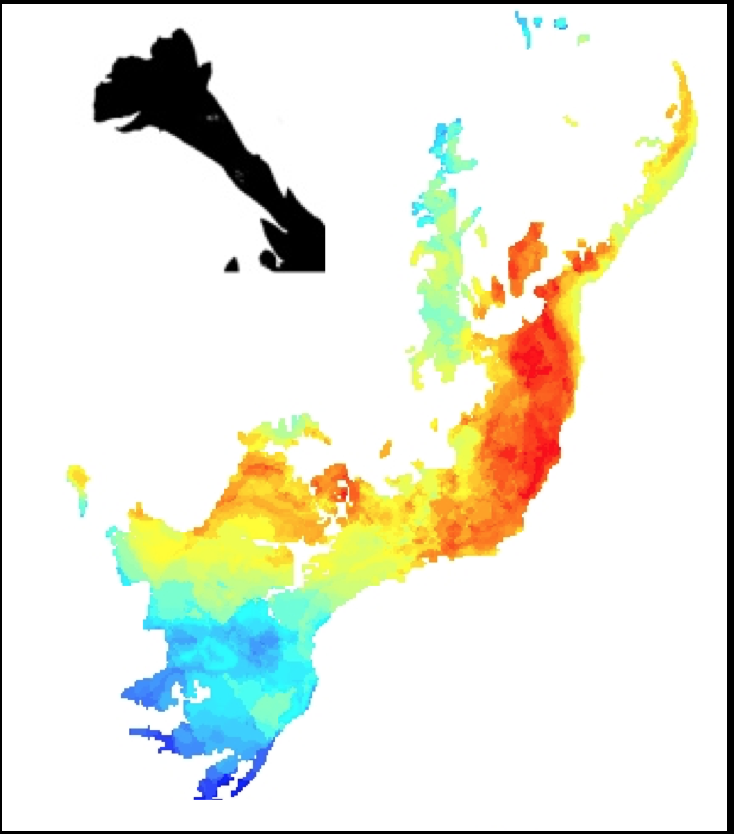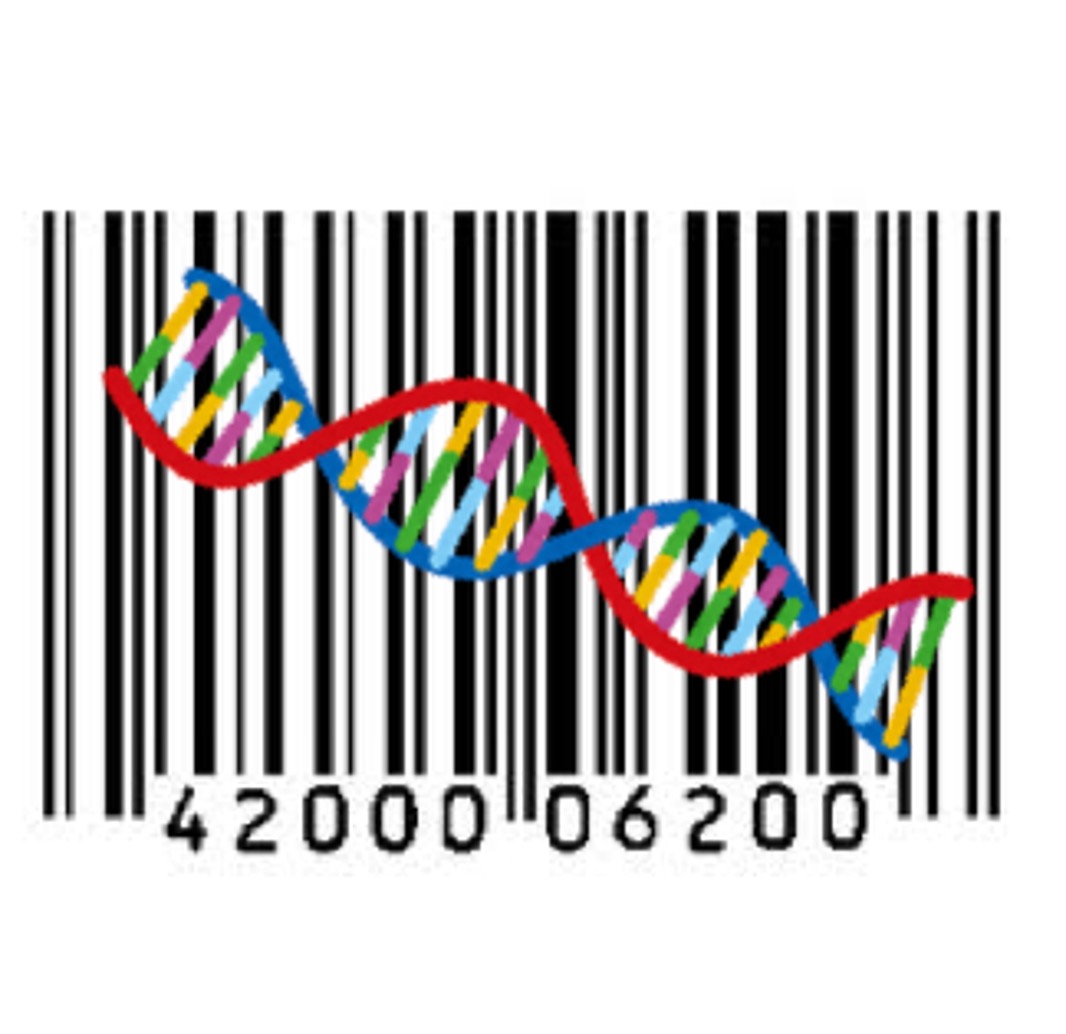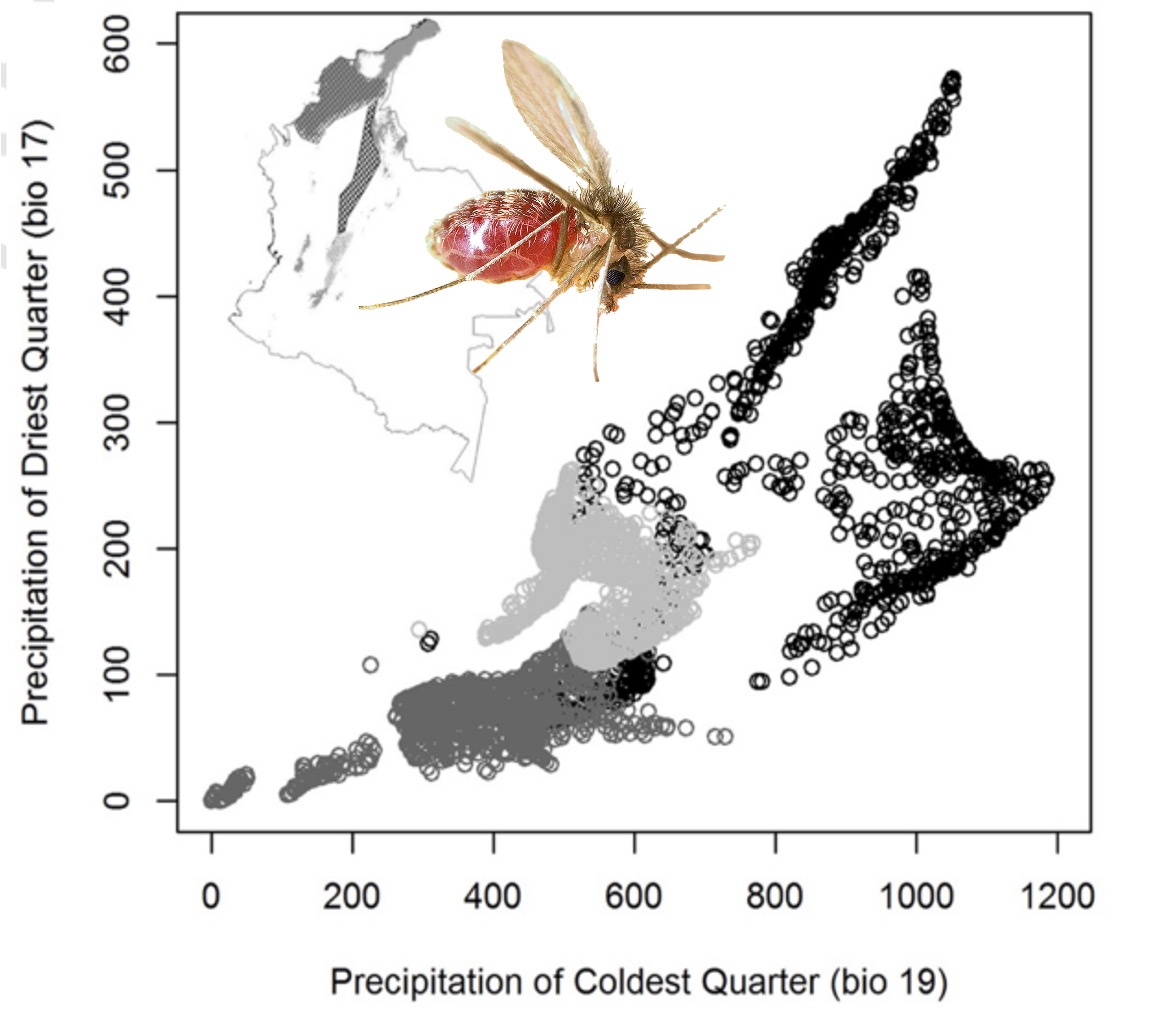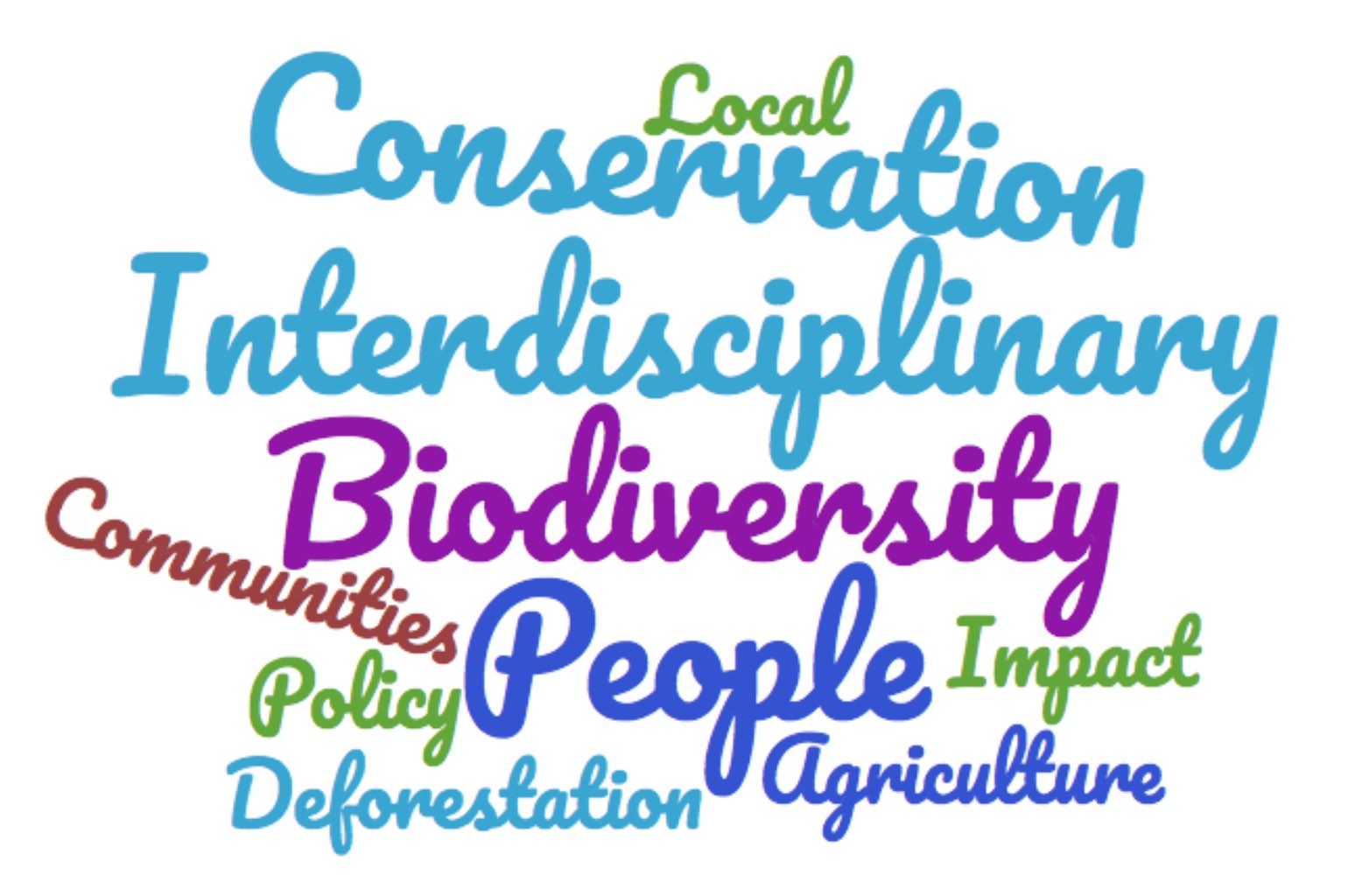My main research right now is focused on patterns of tree diversity and their environmental correlates and the phylogeography of neotropical amphibians. [The lab website is under construction, soon you will find more information on members projects]
I am generally interested in spatially explicit research and I love interdisciplinary research so I am or have been involved in projects spanning from the study of deforestation drivers to the distribution of tropical diseases. Here is a small summary of some of those projects but if you want to know more don't hesitate to send me an email  !
!
 | For my dissertation I evaluated how environmental variables such as climate (temperature and precipitation), climatic stability, topography etc. are related to patterns of diversity (both taxonomic and phylogenetic). This project has resulted in 3 publications and a couple more are in the pipeline. You can find the first one on the potential of remote sensing data for indirect estimates of plant diversity in the Brazilian Atlantic forest [Here]. The second one on the patterns of taxonomic and phylogenetic diversity in the Brazilian Atlantic Forest [Here].. The third one on the environmental correlates of diverstiy in the Atlantic Forest is available [Here]. I gave a seminar for the Biology Institute at UNAM in Mexico about this project in spanish, you can watch it [Here]. |
Phylogeography of Neotropical Amphibians: traits, climate and geography as drivers of genetic diversity

For years I have been interested in the determinants of genetic structure and genetic diversity in neotropical amphibians. I have found that a combination of factors are important and this is related to species traits (e.g. dispersal ability). It is the interaction between each species traits and their environment that determines the strength or permeability of a given barrier. Here are links to a few publications related to this project: [Get1][Get2][Get3][Get4]. This work has been done in collaboration with past and present members of two great labs: The CrawfordLab at Universidad de los Andes in Colombia and The CarnavalLab at CUNY.

For years I have been interested in the determinants of genetic structure and genetic diversity in neotropical amphibians. I have found that a combination of factors are important and this is related to species traits (e.g. dispersal ability). It is the interaction between each species traits and their environment that determines the strength or permeability of a given barrier. Here are links to a few publications related to this project: [Get1][Get2][Get3][Get4]. This work has been done in collaboration with past and present members of two great labs: The CrawfordLab at Universidad de los Andes in Colombia and The CarnavalLab at CUNY.
| Although I am not currently working on this, I did for a few years and would love to go back to it. The project included using DNA barcode data for phylogeography applications [here], for surveying diversity [here] and for identification of fauna in illegal traffic seizures [link]. Within this project I also published a review of DNA barcoding uses in Spanish [Get] and a comparison of species id accuracy using different methods [here]. Most of this work was done when I was part of the CrawfordLab at the Universidad de los Andes in Colombia and continued as a collaboration with that awesome lab. Definitely check it out! |  |
 | I love maps and models so I have been involved in different collaborative projects led by the amazing Camila Gonzalez at Universidad de los Andes in Colombia using spatially explicit sampling designs, ecological niche modeling and others to understand the distribution and climate drivers of tropical diseases, their vectors and causing agents. We published three papers out of this collaboration, on sandfly distribution inside villages in northern Colombia, on sandfly distribution changes under climate change and, one on malaria vector, parasite and infection in Cordoba, Colombia. |
| I believe as biologists we have a lot to offer in interdisciplinary research that can have broader impacts in society and I am eager to participate of such interdisciplinary efforts. With this in mind I have in a few occasions joined forces with social scientists to better understand complex systems. This led to a few publications were we investigate the effect of communal property of land by afrocolombian communities in deforestation patterns [Pub][video (in spanish)] and the impacts of planting local versus clonal varieties of cacao in Ecuador for both communities and biodiversity [Pub here]. Looking forward to more collaborations like these! |  |
Amphibian conservation
 I started my career as a biologist working with frogs and they will always have a special place in my heart. I am happy to contribute to projects targeting the conservation of this wonderful group of animals. I have worked with a group of researchers led by Vicky Flechas to study how the chytrid fungi currently threatening hundreds of species is distributed in Colombia [Pub][Scicomm (in Spanish)]. I have also been involved with a project studying how illegal trafficking has eroded genetic diversity of a beautiful poison frog, Oophaga lehmanni in the Pacific coast of Colombia [Pub].
I started my career as a biologist working with frogs and they will always have a special place in my heart. I am happy to contribute to projects targeting the conservation of this wonderful group of animals. I have worked with a group of researchers led by Vicky Flechas to study how the chytrid fungi currently threatening hundreds of species is distributed in Colombia [Pub][Scicomm (in Spanish)]. I have also been involved with a project studying how illegal trafficking has eroded genetic diversity of a beautiful poison frog, Oophaga lehmanni in the Pacific coast of Colombia [Pub].
 I started my career as a biologist working with frogs and they will always have a special place in my heart. I am happy to contribute to projects targeting the conservation of this wonderful group of animals. I have worked with a group of researchers led by Vicky Flechas to study how the chytrid fungi currently threatening hundreds of species is distributed in Colombia [Pub][Scicomm (in Spanish)]. I have also been involved with a project studying how illegal trafficking has eroded genetic diversity of a beautiful poison frog, Oophaga lehmanni in the Pacific coast of Colombia [Pub].
I started my career as a biologist working with frogs and they will always have a special place in my heart. I am happy to contribute to projects targeting the conservation of this wonderful group of animals. I have worked with a group of researchers led by Vicky Flechas to study how the chytrid fungi currently threatening hundreds of species is distributed in Colombia [Pub][Scicomm (in Spanish)]. I have also been involved with a project studying how illegal trafficking has eroded genetic diversity of a beautiful poison frog, Oophaga lehmanni in the Pacific coast of Colombia [Pub].